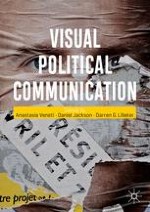2019 | OriginalPaper | Buchkapitel
3. The Power of Visual Political Communication: Pictorial Politics Through the Lens of Communication Psychology
verfasst von : Darren G. Lilleker
Erschienen in: Visual Political Communication
Verlag: Springer International Publishing
Aktivieren Sie unsere intelligente Suche, um passende Fachinhalte oder Patente zu finden.
Wählen Sie Textabschnitte aus um mit Künstlicher Intelligenz passenden Patente zu finden. powered by
Markieren Sie Textabschnitte, um KI-gestützt weitere passende Inhalte zu finden. powered by
